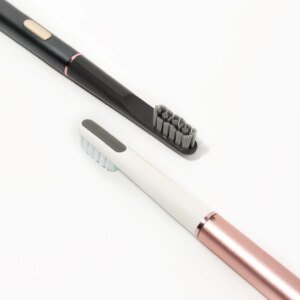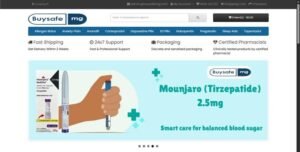When Healing Needs More Than Standard Care
In musculoskeletal medicine, physicians often encounter patients whose injuries are too advanced for conservative therapy but not severe enough to justify surgical intervention. Corticosteroid injections may provide temporary relief, but they do little to promote true biological repair. This is where platelet rich fibrin (PRF) has entered the conversation as a natural, autologous option that supports the body’s healing response.
What Is Platelet Rich Fibrin?
Platelet rich fibrin is a second-generation platelet concentrate derived entirely from a patient’s own blood. Unlike platelet-rich plasma (PRP), which is anticoagulated and processed to create a liquid injection, PRF forms a fibrin clot or matrix during preparation. This structure acts as a biologic scaffold, trapping platelets and leukocytes in a way that allows for a sustained release of growth factors over days rather than minutes.
For physicians, the difference is more than academic. The fibrin matrix provides both structural support and a biologically active environment that can be used in orthopedic, surgical, and pain management applications.
Biological Mechanisms That Matter
The clinical rationale for PRF lies in its composition and behavior:
- Slow Growth Factor Release – The fibrin network controls the release of PDGF, TGF-β, VEGF, and other bioactive molecules over time, creating a prolonged biological effect.
- Leukocyte Content – White blood cells contribute immunomodulatory signals that may support controlled inflammation, an important stage in repair.
- Fibrin Scaffold – Provides a natural three-dimensional structure that facilitates cell migration and tissue integration.
Taken together, these features distinguish PRF from other biologics and make it an attractive adjunct in regenerative workflows.
PRF Treatment in Clinical Practice
Orthopedic and Sports Medicine Applications
PRF treatment is being used by physicians in joint and soft tissue conditions where biologic support is desirable. Tendon repairs, muscle injuries, and intra-articular injections for degenerative changes are areas where PRF is gaining traction as a minimally invasive, autologous option.
Surgical Adjunct
PRF membranes or plugs can be applied during procedures to support local healing, whether in bone grafting or soft tissue closure. This dual use — injectable or structural — gives clinicians flexibility in tailoring biologic support to their procedures.
Pain Management Context
For pain specialists, PRF provides an option to move beyond symptomatic injections and into biologically active strategies. By supporting the tissue environment, PRF aligns with goals of long-term function and reduced dependency on steroids.
Platelet Rich Fibrin and Bone Regeneration
One of the most studied areas of platelet rich fibrin is in bone regeneration. The fibrin matrix not only serves as a carrier for growth factors but also provides a scaffold that can be placed directly into bony defects.
Clinical examples include:
- Spinal fusion adjuncts – Used alongside grafts to improve osteogenesis.
- Fracture healing – Applied to nonunion sites as a biologic stimulus.
- Oral and maxillofacial surgery – Widely used in grafting and implantology, offering a strong evidence base for bone integration.
While more orthopedic-specific trials are needed, the principles are promising and demonstrate why many clinicians are evaluating PRF in musculoskeletal repair.
Benefits and Challenges
Benefits
- Autologous and natural – No additives or anticoagulants, reducing risk of adverse reactions.
- Sustained biologic activity – Growth factors released gradually.
- Versatility – Injectable, membrane, or clot forms provide clinical flexibility.
- Outpatient-friendly – Preparation fits within most practice workflows.
Challenges
- Standardization – Preparation protocols vary, leading to inconsistent product characteristics.
- Evidence variability – While strong in oral surgery, musculoskeletal data is still emerging.
- Regulatory context – Physicians must stay within guidelines for minimal manipulation and approved indications.
These realities underscore the importance of combining clinical enthusiasm with transparency and compliance.
Integrating PRF Into Physician Workflows
For adoption to be practical, preparation must be efficient, reproducible, and compliant. Advanced centrifuge systems and PRF kits simplify this process by:
- Reducing variability between samples.
- Maintaining sterile, closed workflows.
- Shortening preparation time.
Accretion Portal supports physicians by providing technologies like the Horizon centrifuge systems and PRF kits designed for daily clinical use. Combined with educational resources, these solutions ensure clinicians can deliver PRF consistently without disrupting busy schedules.
Future Directions for Platelet Rich Fibrin
The future of platelet rich fibrin in regenerative care is promising. Research is exploring:
- Combination therapies – Pairing PRF with scaffolds or grafts to enhance integration.
- Personalized protocols – Adjusting spin times and methods to create PRF types tailored for specific tissue needs.
- Digital outcome tracking – Using patient-reported tools and imaging to measure long-term PRF impact in musculoskeletal cases.
As evidence grows, physicians who understand PRF today will be best positioned to adopt its next-generation applications responsibly.
Key Takeaways for Physicians
- Platelet rich fibrin is a second-generation platelet concentrate with a natural fibrin matrix.
- It offers prolonged growth factor release and scaffold support for tissue repair.
- PRF treatment is versatile, with applications in orthopedics, surgery, and pain management.
- Evidence for bone regeneration is strongest in oral/maxillofacial contexts but is expanding into orthopedics.
- Workflow efficiency and standardization are key to consistent outcomes.
- Accretion Portal provides technologies and education to make PRF integration accessible and reliable.
Conclusion: Practical Biology for Everyday Practice
For physicians asking where PRF fits, the answer is clear: it is not a miracle cure, but a biologically logical, evidence-informed adjunct to conventional protocols. By supporting natural healing with sustained growth factor release and a fibrin scaffold, platelet rich fibrin offers clinicians another tool for bridging the gap between conservative care and surgery.
Accretion Portal:
Accretion Portal partners with physicians to provide advanced PRF kits and centrifuge systems that simplify preparation and ensure reproducibility. To learn how PRF treatment can fit into your orthopedic, surgical, or pain management protocols, connect with Accretion Portal today to request a demo, review comparison sheets, or access physician-focused educational resources.






